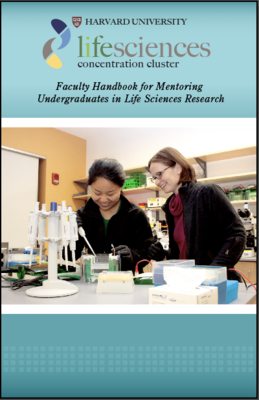1. Adviser, Teacher, Role Model, Friend: On Being a Mentor to Students in Science and Engineering. National Academy of Sciences. National Academy Press, 1997. pdf available here.
2. How to Mentor Undergraduate Researchers, Council on Undergraduate Research, 734 15th Street NW, Suite 550, Washington, DC, 20005-1013
3. Project Kaleidoscope (PKAL) is one of the leading advocates in the United States for what works in building and sustaining strong undergraduate programs in the fields of science, technology, engineering and mathematics (STEM). PKAL is an informal alliance taking responsibility for shaping undergraduate STEM learning environments that attract undergraduate students to STEM fields, inspiring them to persist and succeed by giving them personal experience with the joy of discovery and an awareness of the influence of science and technology in their world. From the work of the extensive PKAL community, resources are available that can be adapted by leaders on campuses across the country working to ensure robust STEM learning of all their students.
4. Association for Women in Science - The purpose of the AWIS Mentoring Project was to attract and retain women undergraduate and graduate students in the sciences. It was designed to integrate female students into the scientific community by helping them identify and overcome the obstacles that prevent them from continuing in science. Since young women generally are not encouraged to pursue careers in science, AWIS members worked to counteract negative messages students receive from society at large.
5. Entering Mentoring - A Seminar to Train a New Generation of Scientists, Jo Handelsman, Christine Pfund, Sarah Miller Lauffer and Christine Maidl Pribbenow. The Wisconsin Program for Scientific Teaching, University of Wisconsin-Madison, 2005.

